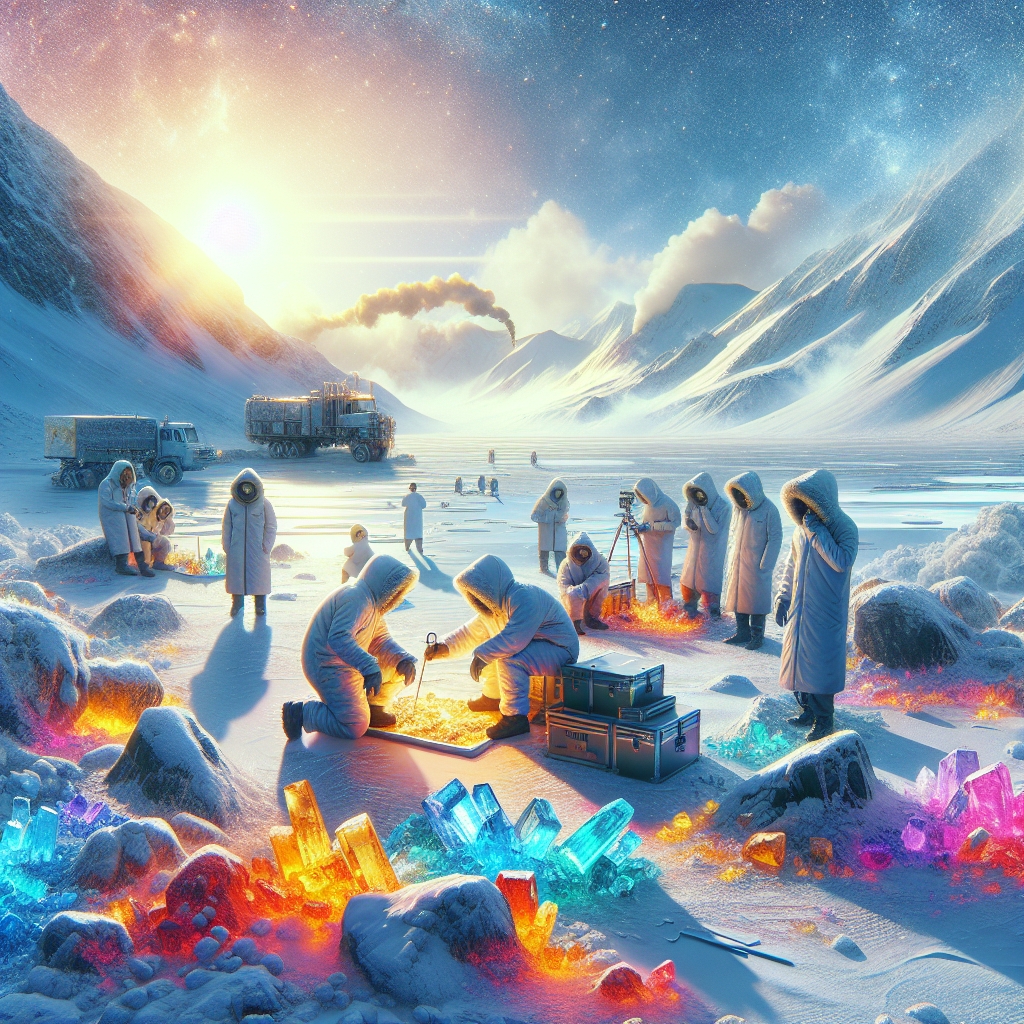The Arctic region, often perceived as a remote and inhospitable environment, is increasingly becoming a focal point for scientific research and industrial interest, particularly in the field of mineral exploration. Among the most sought-after resources are rare earth elements (REEs), a group of 17 chemically similar elements that are critical in the manufacturing of high-tech devices, renewable energy technologies, and advanced military applications. This article delves into the significance of rare earth elements, the unique geological formations in the Arctic that harbor these minerals, and the environmental and geopolitical implications of their extraction.
Chapter 1: Understanding Rare Earth Elements
Rare earth elements are not actually rare in terms of abundance; rather, they are rarely found in economically exploitable concentrations. The 17 elements classified as REEs include the 15 lanthanides, along with scandium and yttrium. These elements possess unique properties that make them essential in various applications, from electronics to clean energy solutions.
REEs are crucial in the production of permanent magnets, phosphors, catalysts, and batteries. For instance, neodymium is used in powerful magnets found in electric vehicles and wind turbines, while europium is a key component in LED lighting and television screens. The demand for these elements has surged in recent years, driven by the rapid advancement of technology and the global shift towards sustainable energy sources.
Despite their importance, the supply chain for rare earth elements is fraught with challenges. Historically, China has dominated the production of REEs, controlling over 80% of the global supply. This monopoly has raised concerns about supply security, prompting countries like the United States, Australia, and Canada to explore alternative sources, including the Arctic region.
Chapter 2: Geological Formations in the Arctic
The Arctic region is characterized by its unique geological formations, which are believed to contain significant deposits of rare earth elements. The geology of the Arctic is shaped by a combination of ancient tectonic activity, glacial processes, and sedimentation, creating a diverse array of mineral resources.
One of the most promising areas for REE exploration is Greenland, where geological surveys have identified several key deposits. The Ilimaussaq complex, for example, is known for its rich concentrations of rare earth minerals, including zircon, eudialyte, and bastnäsite. These minerals are often found in alkaline igneous rocks, which are formed from the cooling of magma that is rich in rare earth elements.
In addition to Greenland, parts of northern Canada and Russia also show potential for REE deposits. The Thor Lake project in Canada, for instance, has been identified as one of the largest undeveloped rare earth deposits in the world. The geological formations in these regions are not only rich in REEs but also contain other valuable minerals, such as uranium and thorium, which can further enhance their economic viability.
However, the exploration and extraction of these minerals in the Arctic are not without challenges. The harsh climate, remote locations, and fragile ecosystems pose significant obstacles to mining operations. Moreover, the potential for environmental degradation raises concerns among indigenous communities and environmentalists, who advocate for sustainable practices and responsible resource management.
Chapter 3: Environmental and Geopolitical Implications
The extraction of rare earth elements in the Arctic has far-reaching environmental and geopolitical implications. As nations vie for control over these valuable resources, the Arctic is becoming a new frontier for geopolitical tensions. The melting ice caps due to climate change are opening up previously inaccessible areas, leading to increased interest from various countries and corporations.
From an environmental perspective, mining activities in the Arctic can have devastating effects on local ecosystems. The delicate balance of the Arctic environment is easily disrupted, and the potential for pollution, habitat destruction, and biodiversity loss is significant. The extraction process itself can lead to the release of toxic substances, which can contaminate water sources and harm wildlife.
Moreover, the social implications for indigenous communities in the Arctic cannot be overlooked. Many of these communities rely on the land for their livelihoods, and the introduction of mining operations can threaten their traditional ways of life. It is crucial for governments and corporations to engage with indigenous peoples and consider their rights and perspectives in the decision-making process regarding resource extraction.
Geopolitically, the race for rare earth elements in the Arctic is intensifying. Countries like the United States and Russia are increasing their military presence in the region, viewing it as a strategic area for resource control. The potential for conflict over these resources is a growing concern, as nations seek to secure their interests in a rapidly changing global landscape.
In conclusion, the Arctic region holds significant promise for the discovery and extraction of rare earth elements, which are vital for modern technology and sustainable energy solutions. However, the pursuit of these resources must be balanced with environmental stewardship and respect for indigenous rights. As the world continues to grapple with the challenges of resource scarcity and climate change, the Arctic will undoubtedly play a crucial role in shaping the future of mineral exploration and geopolitical dynamics.

